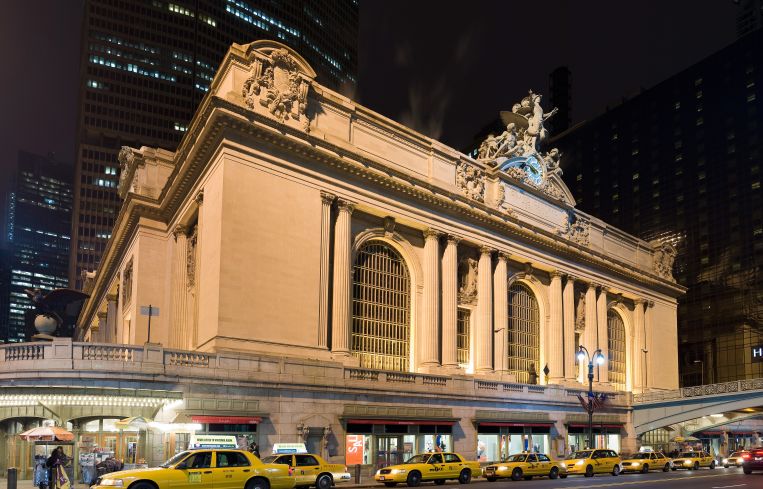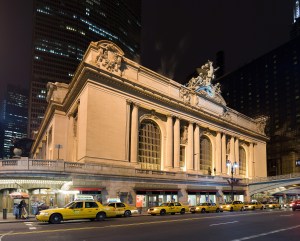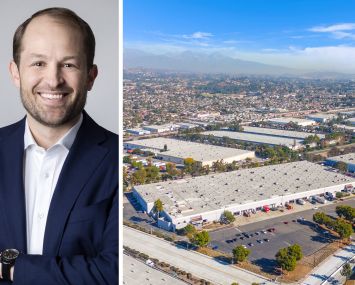The Shape of Things to Come: REBNY’s 2014 Agenda
By Gus Delaporte January 15, 2014 10:00 am
reprints
Last year ended in disappointment for the Real Estate Board of New York when the New York City Council struck down Mayor Michael Bloomberg’s sweeping Midtown east rezoning proposal.
The plan, which would have transformed 73 blocks surrounding Grand Central Terminal, had been viewed as vital modernization of an area deemed structurally obsolete by many in the industry.
REBNY is undeterred in 2014, however, and is as determined as ever to push through not only Midtown east rezoning but a number of other development projects and legislation it deems critical to the future of the city’s infrastructure.
 The industry group has already reached out to the new mayoral administration with hopes of facilitating the revival of Midtown east rezoning. Newly minted Mayor Bill de Blasio, for his part, has indicated an intention to revise the plan, which under its previous incarnation raised questions over the trading of air rights and infrastructure development costs.
The industry group has already reached out to the new mayoral administration with hopes of facilitating the revival of Midtown east rezoning. Newly minted Mayor Bill de Blasio, for his part, has indicated an intention to revise the plan, which under its previous incarnation raised questions over the trading of air rights and infrastructure development costs.
“We think Midtown east rezoning is critical to get done, and we look forward to working with the new planning commission leadership,” said Steve Spinola, president of REBNY.
There is optimism that REBNY’s efforts to push through the proposal will be met at least halfway by the de Blasio administration. Immediately following the City Council decision last year, then-Mayor-elect de Blasio expressed eagerness to rework the plan to better delineate guidelines for both trading air rights and funding infrastructure development costs, which have been estimated at $200 million.
“We must continue this process in earnest upon taking office, and I commit to presenting a revised rezoning plan for the area by the end of 2014,” Mr. de Blasio said in a statement following the decision.
Even former Mayor Bloomberg, who had championed the rezoning plan as his last significant public works project before leaving office, expressed optimism, however muted, that the plan might be revived.
“The inability to reach a consensus on the plan’s details is regrettable, but it was encouraging that nearly everyone involved in the process recognized the need for the area to be rezoned to ensure that it remains competitive with other business districts around the world,” he said in a statement following the announcement.
REBNY’s membership is optimistic as well. SL Green, the city’s biggest landlord and a significant stakeholder in the Midtown east submarket, also expects a revised plan to be revealed next year, according to an investor conference call held late last year.
Another issue at the top of the agenda since Mayor de Blasio has taken office is the new administration’s focus on affordable housing. REBNY has aligned itself with the initiatives, Mr. Spinola said, acknowledging that while Mayor de Blasio’s target of creating or preserving 200,000 affordable units in the next 10 years is ambitious, REBNY does not disagree with it.
“We have already begun the dialogue among ourselves and have communicated with the new administration about how we can put together the new programs needed for as much construction as is humanly possible,” Mr. Spinola said of the early efforts.
Elsewhere in the city, REBNY has honed its focus in on a resilient lower Manhattan. The industry group will be petitioning the state in Albany for the renewal of leasing incentives downtown, many of which expired at the end of last year. Those incentives include a real estate tax abatement and a sales tax exemption related to the build-out costs.
With lower Manhattan riding a wave of momentum post-Superstorm Sandy, REBNY views the incentives as a critical component of continued success.
“The incentives are important for keeping and attracting office tenants in lower Manhattan, and we are optimistic,” Mr. Spinola said. “Downtown keeps getting rocked and then keeps coming back better than ever before.”
Despite the positive signs in 2013, which included the topping out of the Durst Organization’s 1 World Trade Center and the opening of Silverstein Properties’ 4 World Trade Center, there is still a significant amount of space to fill in lower Manhattan.
“A little over a year ago, people were questioning whether Downtown Manhattan could withstand the impact of Sandy, and the fact is it did, but there is still an awful lot of space we need to occupy,” Mr. Spinola noted.
Also in Albany, REBNY will be petitioning for the extension of New York’s brownfield tax credits program. The credits have been available to developers for cleanup and reuse of brownfield sites, and though environmentalists have expressed some concern with the program, there is a consensus that cleaning up brownfield sites—land previously used for industrial purposes—has benefits from both environmental and development perspectives.
“We think that even though the law doesn’t expire in 2015, we can’t wait until it’s about to expire,” Mr. Spinola said of the urgent need to petition for extension now.
With so much on the docket for 2014, outsiders might be forgiven for thinking REBNY will have little time to focus attention elsewhere this year, but don’t tell that to Mr. Spinola. The organization fully expects to continue to champion large development projects in the city, including Hudson Yards on the Far West Side, where an additional subway stop on the 7 line is still in REBNY’s sights.
“We still haven’t given up on finding a way to fund an additional station there,” Mr. Spinola said.
The 7 line extension isn’t the only major transit initiative in the works, however, as the Fulton Center and East Side Access projects move ahead.
Fulton Center, the $1.4 billion development that will link many of the city’s major subway lines, is expected to reach completion this June. The project, which first started in 2005, centers on the Grimshaw Architects and James Carpenter Design Associates-designed Fulton Building in the heart of lower Manhattan.
The East Side Access project, a longer-term public works initiative, will link the Long Island Rail Road to the east side of Manhattan at Grand Central Terminal. Expected to be online by 2019, the estimated $8 billion project will include a new station built below the existing Grand Central concourse.
The outer boroughs won’t be left behind either. Projects like the Domino Sugar Factory in Williamsburg, Brooklyn, and Willets Point in Queens will get REBNY’s full support.
REBNY’s upcoming 2014 will also mark a year in the hot seat for the group’s youngest-ever chairman, Rob Speyer, who replaced Mary Anne Tighe, REBNY’s first female chair, in the role in 2013. After 12 months, the reviews are in, and they’re positive.
“Rob has been a dynamic chairman. He has been willing to talk to the leaders in the city and the state and has provided leadership among our members,” Mr. Spinola said.
The role of chairman has often been viewed as a ceremonial one, albeit with a significant public platform. Yet Mr. Spinola commended Mr. Speyer for the work he has already accomplished in the position.
Mr. Speyer has already begun working on affordable housing initiatives and will continue to advocate for tax fairness for the industry. He has also taken steps to form working groups among REBNY’s members in order to identify the industry’s top priorities.
By all accounts, 2014 will be a busy year for Messrs. Spinola and Speyer as REBNY looks to maximize the influence of the real estate community on the city’s ever-changing skyline.


